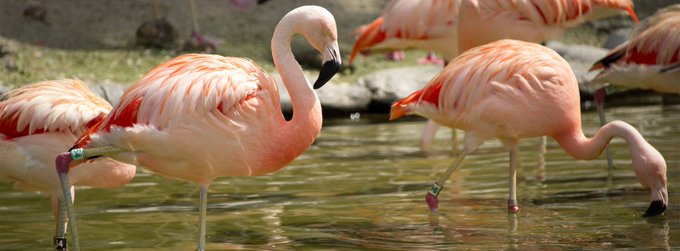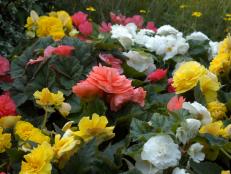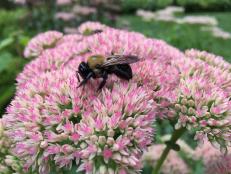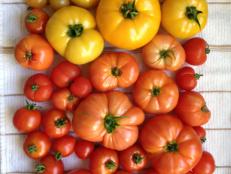14 -20-3-2021 LESSON 3626 Human Ancestors Were Nearly All Vegetarians-Methods of Collecting and Eating Food by birds, animals etc.,Step-by-Step Guide to Successful Edible Container Gardening

Human Ancestors Were Nearly All Vegetarians
anthropologists have spent many a career attempting to hone in on the
diets of our most recent ancestors. Typically, they focus on our stone
age (AKA Paleolithic) human ancestors or our earlier pre-human, hominid
ancestors. Even if we just consider our stone age ancestors—those folks
whose stories span the time between the first stone tool and the first
agriculture— our ancestors got most of their nutrition from gathered
fruits and nuts;
A
paper out just this month suggests that even Neanderthals–our north
country cousins and mates– may have eaten much more plant material than
previously suspected. Meanwhile, more macho camps of academics paint a
picture of diets with the occasional berry “chaser.”
if you have eaten broccoli, an artichoke or a fig, things are just
beginning. It is in the large intestine, where harder to break down
carbohydrates (such as cellulose, the most common plant compound on
Earth) are torn asunder. This system evolved so as to provide us with as
many calories as possible (long to our benefit) and, also, as many of
the necessary but hard to produce nutrients. The alimentary canal is,
evolutionarily speaking, a masterwork. It makes energy from the food we
are lucky enough to find.
Although all guts are sublime, just how they do what they do varies
among species, much as do the leaves on trees or beaks on birds. When
considering evolution’s great innovations, Darwin dallied among the
beaks, but he might just as well have focused on the gut or even simply
colons. A beak can pick something up, maybe crush it. Big
deal. A colon can jump start the process of turning a bit of rotten
fruit or leaf into usable energy and ultimately life. Science can
replicate a beak; it is still working on making a good replica of a
colon, much less replicating the great variety of colons and guts more
generally found in nature.
The stomachs of some herbivores on the other hand are dense with
hair-like villi and, moving among them, the bacteria that aid in the
breakdown of plant cell walls and their cellulose. The stomach of a cow
is a kind of giant fermenter in which bacteria produce huge quantities
of specific fatty acids the cow can easily use or store (You eat some of
those fatty acids when you eat a cow). In other species, the stomach
scarcely exists and fermentation takes place in a greatly enlarged large
intestine.
Yet, for all of the vulgar and magnificent elaborations on the theme
of tubes to be found inside animals, the guts of humans are boring. Our guts are remarkably similar to those of
chimpanzees and orangutans–gorillas are a bit special–which are, in
turn, not so very different from those of most monkeys. If you were to
sketch and then consider the guts of different monkeys, apes and humans
you would stop before you were finished, unable to remember which ones
you had drawn and which ones you had not. There is variation. In the
leaf-eating black and white colobus monkeys (among which my wife and I
once lived in Boabeng-Fiema, Ghana)
the stomach is modified into a giant fermentation flask, as if the
colobus were kin to a cow. In leaf-eating howler monkeys the large
intestine has become enlarged to take on a similarly disproportionate
role, albeit later on in digestion. But in most species things are not
so complex. An unelaborated stomach breaks down protein, a simple small
intestine absorbs sugars and a large (but not huge) large intestine
ferments whatever plant material is left over. Our guts do not seem to
be specialized hominid guts; they are, instead, relatively generalized
monkey/ape guts. Our guts are distinguished primarily (aside from our
slightly enlarged appendix) by what they are missing rather than what
they uniquely possess. Our large intestines are shorter than those of
living apes relative to the overall size of our gut (more like 25% of
the whole, compared to 46% of the whole in chimps). This shortness
appears to make us less able to obtain nutrients from the cellulose in
plant material than are other primates though the data are far from
clear-cut. The variation in the size and details of our large intestines
relative to those of apes or gorillas have not been very well
considered. In a 1925 study the size of colons was found to vary from
one country to the next with the average Russian apparently having a colon five feet longer than the average Turk.
Presumably the differences among regions in colon length are
genetically based. It also seems likely that the true human colonic
diversity has not yet been characterized (the above study considered
only Europe). Because of the differences in our colons (and ultimately
the number of bacteria in them) we must also vary in how effectively we
turn cellulose and other hard to break down plant material into fatty
acids. One measure of the inefficiency of our colons is our farting,
which we all know varies person to person. Each stinking fart is filled
with a measure of our variety. Aside then from the modest size of our colon, our guts are strikingly, elegantly, obviously, ordinary.
meat is not easy. Meat is the body of another animal, an animal that
runs, that tries to avoid being captured. Hunters need great physical
capacity, and every attempt is a risk. Failures are frequent, and with
each one hunger increases and energy is reduced. That is why the
majority of the Survivors of the Planet Earth use a different system to
obtain food.
means collecting, accumulating different things. Gatherer animals spend
their whole time moving around, almost always eating grasses, fruits
and leaves; but often they also come across honey, insects or eggs,
which supplement their diet. Vegetables generally have fewer proteins
than meat, but they are all around and do not flee. So, the only thing
you need do is eat a great quantity of them and at the same time try to
make sure the carnivores do not eat you.
may spend weeks between one meal and the next, periods of enforced
fasting which are compensated for when they are successful.
to a specific vegetarian diet means that the animal becomes entirely
dependent on certain vegetable species. That is exactly what happened to
the lemurs on the island of Madagascar, just 400 kilometres from the
south-east coast of Africa.
lemurs became isolated in Madagascar and, unlike everywhere else on the
planet, were saved from extinction there. In this way, the lemurs
followed their parallel evolution and adapted to the different habitats
and plant foods of the island.
human hunter-gatherer rapidly refined his techniques, mastering his
environment. Then, he learnt that instead of going in search of the
plants where they grew, undergoing hardships like the elephants or the
marine iguanas, he could plant them himself right by his home. A
clearing in the forest, a refuge and a garden: this was the birth of
agriculture, and with it sedentary man. This took place some 10,000
years ago, and was called the Neolithic Revolution.
as such arose independently in various different regions of the world,
and was the first of the great cultural advances which have transformed
the planet, permitting human populations to multiply.
this point, anther step in the cultural evolution of the human gatherer
occurs. The harvested food is increasingly processed, leading to
cooking, gastronomy, the meeting of the family and the clan around the
fire or stove, and so eating becomes much more than simple ingestion of
food. It then becomes a social act, strengthening bonds.
more such videos on English Stories, English Grammar, English Stories,
Poem & Rhymes, Hindi Stories and Poems, Maths, Environmental Studies
and Science @ https://www.youtube.com/PeriwinkleKids
Food is the fuel of life. Without food, humans
cannot survive. So it is important for us to know where our food
actually comes from. Like did you know that cake is actually made from
food that comes from plants? Let us learn more about sources of food.
Plants as a Source of Food
Much of the food we eat comes from plants, trees, crops, bushes, leaves and sometimes even roots.
The most obvious examples of the foods we source from plants are fruits
and vegetables. All of the fruits and vegetables grow on plants.
Another such example of food from plants are crops.
These are rice, wheat, maize, millets, barley etc. which are the seeds
of the crop plants. After we grom them, they are harvested. The majority
of processed food like flour, bread, biscuits etc we consume is sourced
from crop plants.
Now those animals
who only eat food obtained from plants are known as herbivores. Some
examples are cows, zebras, hippos, giraffes, buffalos etc. Then humans
who only rely on foods from plants are vegetarians. Let us take at
examples of some foods we get from plants and their different parts
- Fruits: Apples, Oranges, Bananas, Mangoes
- Leaves: Spinach, Coriander, Kale, Lettuce
- Root: Potato, Carrots, Turnips
- Seeds: Rice, wheat, maize, nuts (peanuts, almonds)
and red algae, diatoms, larval and adult forms of small insects,
crustaceans, molluscs, and small fishes make up the main diet of
flamingos.
flamingo’s pink or reddish feather, leg, and facial coloration come
from a diet high in alpha and beta carotenoid pigments, including
canthaxanthin. The richest sources of carotenoids are found in the algae
and various invertebrates that make up the bulk of a flamingo’s diet.
Greater, Caribbean, and Chilean flamingos have shallow-keeled bills
and feed on insects, aquatic invertebrates, and small fishes. Caribbean
flamingos eat larval and pupal forms of flies and brine shrimp as their
main food.
flamingos eat an estimated 60 g (2.1 oz.) dry weight to fulfill their
daily food requirements. Through slow-motion photography, researchers
discovered that these birds pump water through their bills 20 times a
second to filter their food.
much slower filtration rate was found in the Caribbean flamingos - only
4 to 5 times a second to filter out their daily food requirements of
270 g (9.5 oz.) dry weight.
in shallow water, flamingos lower their necks and tilt their heads
slightly upside-down, allowing their bills to hang upside-down facing
backward in the water.
sweep their heads from side to side just below the surface of the water
to collect their food if they have a deep-keeled mandible. If the
mandible is shallow-keeled, a flamingo sweeps its head from side to side
deeper into the mud to collect its food.
flamingo filters its food out of the water and mud with a spiny,
piston-like tongue that aids in sucking food-filled water past the
lamellae inside the curved bill. The fringed lamellae filter out food,
and the water is passed back out of the bill.
are fed a varied diet in zoological environments in order to maintain
their pink coloration, as well as their general health.
and Busch Gardens feed flamingos a diet that includes all the nutrients
needed for optimal health. The flamingos are fed in a specially
designed feeding trough.
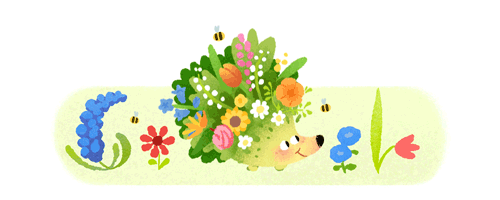

https://seaworld.org/animals/all-about/penguins/diet-and-eating-habits/
wildlife is in danger. From being hunted to coming into conflict with
people, animals are being threatened with extinction.
videos and listings! We’ve gone the extra mile to give you more
insights on wildlife and how you can be part of the solution.
Wild LifeAsia’s wildlife is in danger. From being hunted to coming into
conflict with people, animals are being threatened with
extinction.Explore our stories of how conservationists are giving these
creatures a chance to thrive in the wild.
you’ve tried growing vegetables in pots but ended up frustrated, this
advice is for you, as well as for anyone looking to grow beautiful,
bountiful edible container gardens.
Why Grow Fruits and Vegetables in Containers?
are a great option for those with limited (or no) ground space, such as
apartment dwellers, and for newbie gardeners who don’t want to commit
to digging just yet. They’re also a beautiful addition to a larger
garden. Growing in containers can be easy if you set your garden up
right.

